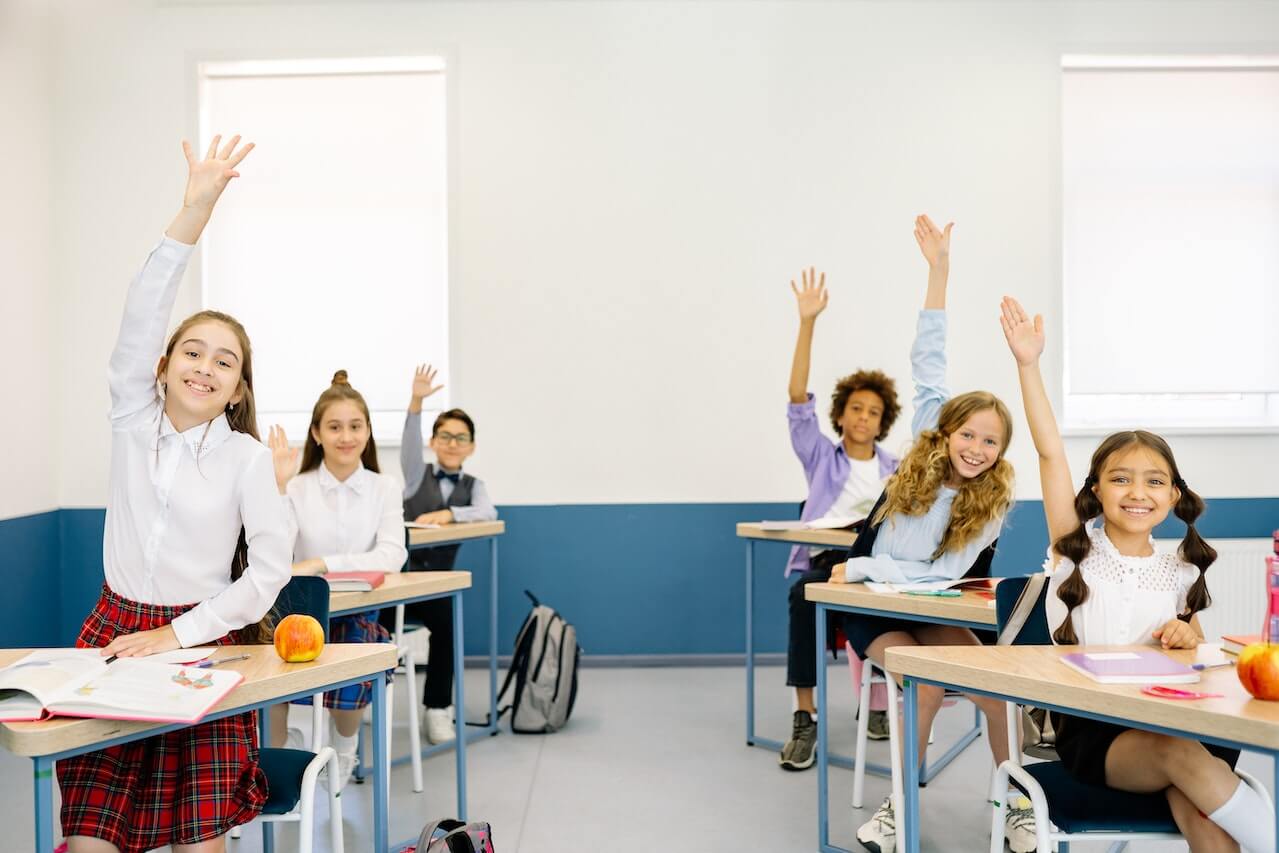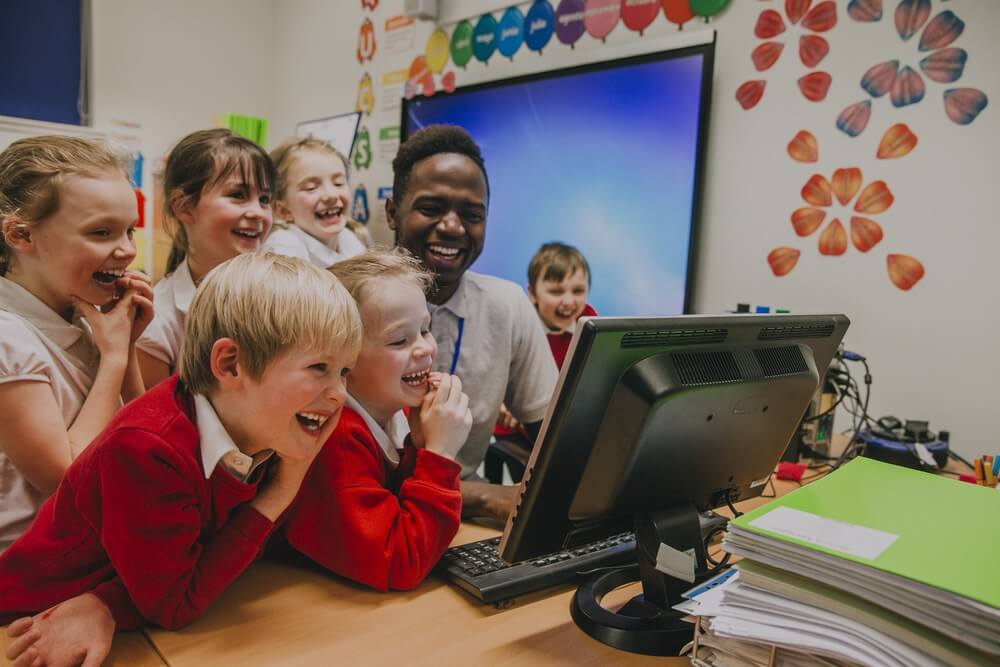Meaningful connections with your students will lead to classrooms filled with collaboration, engagement, and success stories. Most educators know this, but the “how” of making it happen can be a challenge.
Teachers are often so bogged down in administrative tasks, lesson planning, staff meetings, and other activities they struggle to find the time or energy to nurture student relationships and connections. However, those student connections are critical to the learning process and positive student-teacher relationships.
Students who experience meaningful relationships with their teachers at all grade levels often see a correlation between those relationships and academic achievement. Teachers use a wide range of techniques and tactics to make these connections, and time and experience will lead you to what works best for you.
We have outlined some ideas below to give you a jump start on building student connections that lead to academic success.
Seating Assignments (and When to Change Them)
While students sometimes groan about assigned seats in a classroom, there is simply no better way for teachers to quickly memorize student names and faces. Once that connection is in place, teachers can start forming meaningful connections with pupils as they learn more about them individually.
However, these connections are only one part of the classroom equation. The connections your students make with each other are also vital to an engaging and collaborative classroom, so once the names and faces are memorized, it is a good idea to change things up.
Consider changing the seating assignment every six weeks to ensure students are engaging with a variety of peers.

Changing the seating assignments can help to break up cliques that may be working to the detriment of the class. Teachers who observe students who are continually left out may be able to make some clever seating choices, putting them next to students who consistently demonstrate empathy, for example. This small act can go a long way toward meaningful connections in the classroom, enhancing a student’s likelihood of participating and achieving academic goals.
Create Meaningful Opportunities for Sharing
Some families practice a high-low ritual around the dinner table, where each family member might report something good that happened during their day and something that frustrated them or made them feel down.
When managed correctly, this kind of group discussion exercise can also be beneficial in the classroom. Try it out on a Monday morning, setting a few minutes aside for the students to share what happened over the weekend, talk about something they are looking forward to during the week, or just share a recent challenge they faced. This helps teachers gain insight into what motivates individuals and where their strengths and weaknesses are.
It also helps the students build connections with each other, as they learn more about shared interests and talents, common themes among families, or perhaps even a bond bridged between those who face a similar struggle—such as their parent’s divorce or a learning disability.
This kind of sharing is especially helpful when you have international students in the classroom. By helping them forge bonds with their new peers, you will help them acclimate to a new learning environment.
If keeping the students on track is an issue, you could try limiting it to five students per Monday morning session—drawing names out of a hat, using an hourglass timer, or even assigning one student as the timekeeper each week.
Make a Classroom Wall of Fame to Celebrate Student Success
Many teachers spend the days just before school starts perfecting their classrooms. They work on seating arrangements, brightly decorated bulletin boards, and organizational systems that often take up every extra inch of class space.
Try leaving a large portion of blank space on the wall and let the students know it will be filled with their achievements during the year. Perhaps the A+ quizzes get posted on that wall and rotated out weekly, or the students themselves can add to the wall a picture from their swim meet, a blue ribbon from a county fair, or even a certificate of completion awarded by their orthodontist after having braces removed!
Students love recognition because it makes them feel valued and celebrated by their teachers and peers. Sharing success stories regularly is important at all grade levels—it’s not just the kindergartener who wants the gold star! Kids thrive when recognized in middle school, high school, and even in higher education.
Try to Attend Student Events
This one can be challenging for teachers, especially those with kids of their own, but if you can occasionally root your students on at events outside the classroom, this will go a long way toward relationship building inside the classroom. Try swinging by the last quarter of the basketball game, the chorus concert, or the karate demonstration.
Even if you cannot make the time, jot a note down on your calendar to ask the student about the event. When Tyler mentions his scout troop will be hiking that weekend, a quick note on Monday morning will jar your memory, reminding you to ask him about the hike.
Taking an interest in your students’ hobbies outside of school—even if it is just to remember the sports teams they cheer on—helps teachers earn their trust and respect.
Laugh It Off
Students feel uneasy with teachers who are unwilling to show a sense of humor. While there are limits if you want to maintain order and structure in a classroom, there is no reason you cannot also let the kids see you are human like they are.
Laugh when something silly happens, and be sure they also see you laugh at yourself. There is more than enough time to be serious as a teacher during lectures, tests, and so forth. An occasional break from the academic tone to embrace silliness can go a long way toward keeping the students engaged.
Even online learning scenarios provide ample opportunity for laughter: if your cat suddenly jumps in front of the laptop camera, it is okay to laugh with your students before quickly moving him back to his perch on your desk.

Building positive student connections from the start of each year will play a huge role in your success as a teacher and your students’ success. These simple tips can mean the difference between a classroom full of bored and distracted students versus a group of students focused, excited, and ready to learn.





